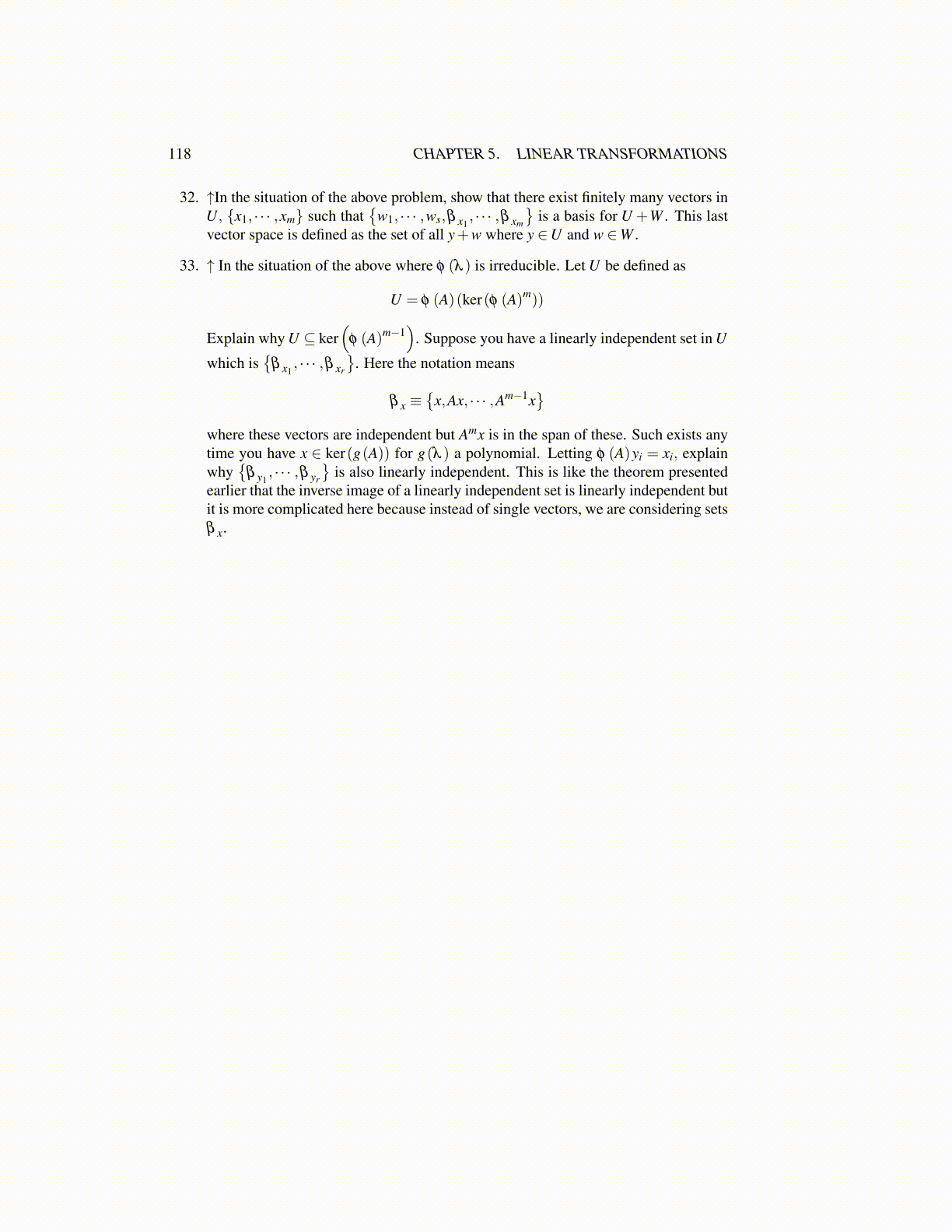
118 CHAPTER 5. LINEAR TRANSFORMATIONS
32. ↑In the situation of the above problem, show that there exist finitely many vectors inU, {x1, · · · ,xm} such that
{w1, · · · ,ws,β x1
, · · · ,β xm
}is a basis for U +W . This last
vector space is defined as the set of all y+w where y ∈U and w ∈W .
33. ↑ In the situation of the above where φ (λ ) is irreducible. Let U be defined as
U = φ (A)(ker(φ (A)m))
Explain why U ⊆ ker(
φ (A)m−1)
. Suppose you have a linearly independent set in U
which is{
β x1, · · · ,β xr
}. Here the notation means
β x ≡{
x,Ax, · · · ,Am−1x}
where these vectors are independent but Amx is in the span of these. Such exists anytime you have x ∈ ker(g(A)) for g(λ ) a polynomial. Letting φ (A)yi = xi, explainwhy
{β y1
, · · · ,β yr
}is also linearly independent. This is like the theorem presented
earlier that the inverse image of a linearly independent set is linearly independent butit is more complicated here because instead of single vectors, we are considering setsβ x.